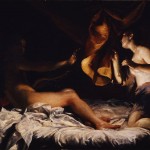by Helen King
Beneath the most quoted lines, there can be a surprising story…
When we study the ancient Greeks and Romans, we are always having to tread a fine line between familiarity and distance. If they are people just like us, then we feel that we can easily understand the nuance of a line of poetry, or appreciate an image on a vase: but if they are totally different from us, then how can we ever claim to understand them at all?
Historically, western culture has identified very strongly with the Greco-Roman world; ‘the glory that was Greece’, in particular, has been appropriated as the origin of much that is familiar to us now, including science, philosophy, democracy, art and architecture, poetry and drama. But other aspects of the classical world have not been greeted with the same enthusiasm. From polytheism and animal sacrifice to gladiatorial combat, and from infanticide to slavery, some features of Greek and Roman society now feel very alien, and if we choose to focus on these then the Greeks and Romans may look to the modern viewer more like the dangerous Other than our honored ancestors.
There’s an interesting phrase that resonates through the history of studying the classical world: ‘the glory that was Greece and the grandeur that was Rome’. Mary Beard and John Henderson, in their useful book Classics: A Very Short Introduction (Oxford: Oxford University Press, 1995), attribute the lines to the original version of Edgar Allan Poe’s 1831 poem To Helen. But in fact the original version had the rather less gripping wording, ‘the beauty of fair Greece, and the grandeur of old Rome‘.
What was this poem To Helen about? It imagines the beauty of Helen of Troy, as you may expect, but was written for a real woman: Jane Stanard, the mother of one of Poe’s friends, who died in 1824. She encouraged his early work, and Poe later described her as ‘the first, purely ideal love of my soul’ (Mabbott, 1978: 164).
The poem became well-known through its inclusion in the Oxford Book of English Verse. The story of that collection of poetry is itself very interesting (and timely for the year of the anniversary of the outbreak of WW1). It was edited by the classically-trained Arthur Quiller-Couch, whose son Bevil fought in the war, survived the trenches, including such terrible battles such as those of Mons and Ypres, but died in the influenza pandemic on 6 February 1919.
In their familiar form, these lines in fact come from a revision of the poem made in 1843. In a further example of our changing evaluations of the past, Beard and Henderson label the poem ‘dreadful and forgotten’ whereas for Poe’s 1941 biographer Arthur Hobson Quinn it was not only ‘oft-quoted’ but ‘one of the most exquisite tributes ever paid by man to woman’.
In the poem, Jane is not only compared to Helen, but also to Psyche. In myth, Psyche was loved by Eros, but he came to her in darkness so she did not know who her lover was. One night she waited until he was asleep, then lit a lamp to reveal that her lover was in fact a god, as you’ll see in the image at the top of the page (personally I think Eros’ wings would have given Psyche a clue, if she’d thought about it…). In the myth, Psyche is very much the innocent – it seems like a reversal of the situation with the boy Edgar and his friend’s mother Jane. What do you think? Is this a poem about intellectual ‘beauty’ or something physical? Does Edgar have a serious crush on Jane? Is he in love with her, or with the ‘Holy Land’ which here represents ancient Greece and Rome?
Here’s the complete poem:
HELEN, thy beauty is to me
Like those Nicæan barks of yore,
That gently, o’er a perfumed sea,
The weary, wayworn wanderer bore
To his own native shore.
On desperate seas long wont to roam,
Thy hyacinth hair, thy classic face,
Thy Naiad airs, have brought me home
To the glory that was Greece
And the grandeur that was Rome.
Lo! in yon brilliant window-niche
How statue-like I see thee stand,
The agate lamp within thy hand!
Ah, Psyche, from the regions which
Are Holy Land!
To find out more:
The best place to start thinking about our approach to the ancient Greeks and Romans remains Paul A. Cartledge, The Greeks: A Portrait of Self and Others (Oxford: Oxford University Press, 1993)
For Poe, see Thomas O. Mabbott, Collected Works of Edgar Allan Poe (Cambridge, MA: The Belknap Press of Harvard University Press, 1978): http://www.eapoe.org/works/mabbott/tom1p046.htm
and Arthur Hobson Quinn, Edgar Allan Poe: A Critical Biography (New York: Appleton-Century-Crofts, 1941)

